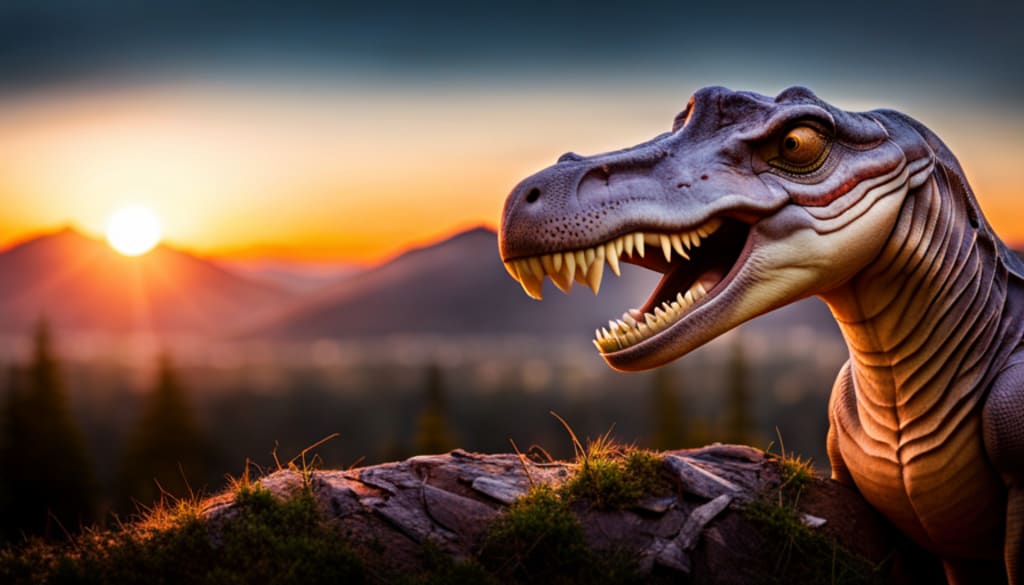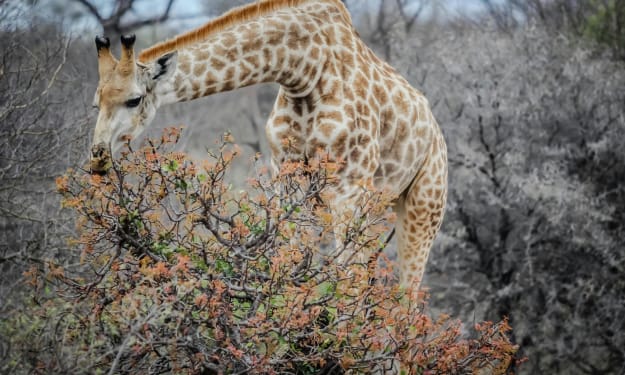Dinosaur Extinction
Why did Dinosaurs Disappear?

Dinosaurs fascinate the human mind. They loom large and menacing through our childhood nightmares. We spend our youth speculating about them. And some of us go on to spend our adulthood trying to sort out the legacy of the Dinosaur: the great mystery of their extinction.
Why did the dinosaur disappear? Did they disappear, or have they merely gone through the process of natural selection and are with us today as birds and smaller reptiles?
There is a positive case to be made for only partial extinction of the dinosaurs. The smaller dinosaur-like creatures had bird-like structures. They had eggs, and they nested during and after the birth cycle. Those forms are still very much with us today.
On the other hand, some of the larger dinosaurs and dinosaur-like animals died out. Was this death gradual or sudden? There is fossil evidence that suggests both possibilities. Fossils show evidence of a slow dying out in the later cretaceous period. Also, at the end of the cretaceous there was a time of great dying, a mass extinction of almost one half of all living creatures on the earth. The dinosaurs were only one of the groups that died out during this time period.
Four major areas of theories are based on: the health of dinosaurs; their reproduction systems; the weather or climate conditions; and extraterrestrial events. For the most part, health of the dinosaur as a possible reason of extinction is unlikely. The theory of height/ size can be discounted simply because dinosaurs as a group were very successful on the life existence scale. Also, it is hard to accept the theories of disease or epidemics as reasonable theories.
There are no suggestions that a disease or group of diseases hit a large amount of dinosaurs at any given time in their life history. One must also consider the fact that there were too many different groups of dinosaurs for all of them to be affected by a disease at the same time.
The theory of starvation came about when scientists started to consider the changes in plant life. It concerns the possibility that herbivorous dinosaurs were unable to adapt to life in the cretaceous period and starved to death. This can be discounted because during this same time flowering plants developed and set up a whole new source of food for the herbivores.
Were the dinosaurs poisoned by some of the new plants available? Scientists took a look at another group around at the same time as the dinosaurs. They studied the turtles.
Turtles are said to be insensitive, and prone to eat whatever happens to be available to them. They survived to cretaceous without any sign of poisoning, so it is a really good bet that the dinosaurs didn't die out through poisons either.
There are two theories about dinosaur extinction based on their reproductive system. They are egg predation and egg viability. The theory that eggs became too thin and had difficulty hatching is a possibility, but there is a case to be made that focuses on other creatures who don't need a particular amount of males and females to keep their species going.
In terms of egg predation, were a lot of eggs stolen by other predators? Yes. But not enough to account for widespread extinction of more than one of the many groups of dinosaurs.
Popular theories involving climate/ weather conditions include: changes in climate that set up a possible greenhouse effect; possibilities of ecological replacement; and temperature dependent sex determination.
There is no evidence that supports any one of these theories to the exclusion of any other possibility. Perhaps in combination with other factors, they might explain some of the mass extinctions, but none of them float on their own.
There is still no single theory supported more than any other, but today the focus is on extraterrestrial events. The possibilities being tossed around are supernova explosions, comet collisions, and asteroid/meteor collisions.
The supernova explosion would explain large-scale extinctions, but questions concerning the selectivity of certain species are still unexplained. The same problem hits the comet/ asteroid/ meteor theory. Why did some species survive and others die out?
This problem is still trying to be solved by modern scientists. Some scientists even argue that extraterrestrial events take place after the mass extinction event. In Hell Creek, Montana scientists study layers of iridium and coal that indicate the end of the dinosaurs came some time before the event that caused the iridium layer. So far only the Montana discoveries support that theory of dinosaur extinction prior to an extraterrestrial event.
These studies may continue for years before any satisfactory conclusion is reached. Either way, dinosaurs and the mystery of their disappearance will occupy our dreams forever.
Bibliography
Colbert, Edwin Harris. Dinosaurs: An Illustrated History. New Jersey. → Hammond. 1983.
Montgomery, Carla W. and David Dathe. Earth: Then and Now. Dubuque, IA. Wm. C. Brown. 1991.
About the Creator
CL Robinson
I love history and literature. My posts will contain notes on entertainment. Since 2014 I've been writing online content, , and stories about women. I am also a family care-giver.
Enjoyed the story? Support the Creator.
Subscribe for free to receive all their stories in your feed. You could also pledge your support or give them a one-off tip, letting them know you appreciate their work.






Comments
There are no comments for this story
Be the first to respond and start the conversation.